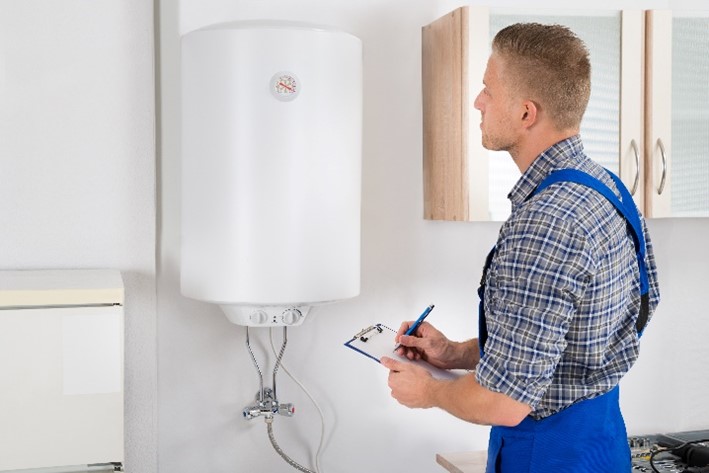Essential Maintenance Strategies for Your Home's Hot Water SystemMaintaining Your Home's Hot Water System: Essential Guidelines
Essential Maintenance Strategies for Your Home's Hot Water SystemMaintaining Your Home's Hot Water System: Essential Guidelines
Blog Article
Almost everyone will have their own unique opinions with regards to How to Maintain a Hot Water Heater in a Few Simple Steps.

Warm water is crucial for day-to-day comfort, whether it's for a revitalizing shower or washing meals. To guarantee your hot water system runs effectively and lasts much longer, regular upkeep is key. This article offers sensible tips and insights on exactly how to keep your home's hot water system to prevent disturbances and costly repair work.
Intro
Keeping your home's warm water system could seem difficult, however with a couple of straightforward steps, you can ensure it runs smoothly for many years ahead. This overview covers everything from comprehending your warm water system to do it yourself upkeep tips and understanding when to employ specialist help.
Significance of Keeping Your Hot Water System
Routine maintenance not just expands the life-span of your hot water system but also ensures it operates efficiently. Disregarding upkeep can result in decreased efficiency, greater power costs, and also early failure of the system.
Indicators Your Hot Water System Needs Upkeep
Knowing when your hot water system needs interest can stop major concerns. Watch out for signs such as irregular water temperature level, unusual sounds from the heating system, or corroded water.
Recognizing Your Hot Water System
Before diving into maintenance jobs, it's practical to understand the basic parts of your hot water system. Commonly, this includes the water heater itself, pipelines, anode poles, and temperature controls.
Month-to-month Upkeep Tasks
Regular month-to-month checks can aid catch minor concerns prior to they escalate.
Purging the Water Heater
Purging your water heater removes debris buildup, boosting effectiveness and prolonging its life.
Monitoring and Replacing Anode Rods
Anode rods protect against rust inside the tank. Evaluating and replacing them when worn out is vital.
Inspecting and Readjusting Temperature Setups
Changing the temperature setups makes sure optimal efficiency and security.
Do It Yourself Tips for Upkeep
You can perform numerous maintenance tasks on your own to maintain your hot water system in leading condition.
Checking for Leakages
Frequently inspect pipelines and connections for leakages, as these can lead to water damage and greater expenses.
Examining Stress Relief Valves
Examining the pressure safety valve ensures it operates correctly and avoids too much pressure build-up.
Insulating Pipelines
Insulating hot water pipelines reduces warm loss and can conserve energy.
When to Call a Specialist
While do it yourself maintenance is helpful, some issues need specialist knowledge.
Facility Issues Needing Expert Aid
Examples include significant leakages, electrical issues, or if your hot water heater is regularly underperforming.
Regular Specialist Maintenance Perks
Specialist maintenance can include complete inspections, tune-ups, and guaranteeing compliance with safety requirements.
Verdict
Normal maintenance of your home's hot water system is necessary for performance, longevity, and cost financial savings. By complying with these ideas and understanding when to look for expert assistance, you can ensure a dependable supply of warm water without unforeseen disruptions.
How to Maintain an Instant Hot Water Heater
Before tinkering with your hot water heater, make sure that it’s not powered on. You also have to turn off the main circuit breaker and shut off the main gas line to prevent accidents. Also turn off the water valves connected to your unit to prevent water from flowing into and out of the appliance. 2. When you’re done, you have to detach the purge valves’ caps. These look like the letter “T” and are situated on either side of the water valves. Doing so will release any pressure that has accumulated inside the valves while at the same time avoid hot water from shooting out and burning your skin. 3. When the purge valves’ caps are removed, you have to connect your hosing lines to the valves. Your unit should have come with three hoses but if it didn’t, you can purchase these things from any hardware or home repair shops. You can also get them from retail stores that sell water heating systems. Read the user’s manual and follow it to complete this task properly. When the hosing lines are connected, open the purge port’s valves. 4. You should never use harsh chemical cleaners or solutions when cleaning your unit. Make use of white vinegar instead. It should be undiluted and you’ll probably use about 2 gallons. 5. Now flush your water heater. This task should probably take about 40 minutes. We can’t give you specific directions for this because the procedure is carried out depending on the type, model and brand of your heater. With that being said, refer to the user’s manual. 6. When you’re done draining the unit, you have to turn off the purge port valves again. Remove the hosing lines that you earlier installed on each of the water valves. Put the valve caps (purge port) back in their respective places and be very careful so as not to damage the rubber discs that are found inside these caps. 7. Now that everything’s back in place, check your user’s manual again to find out how to reactivate your water heating system. 8. Once it is working, turn one of your hot water faucets on just to let air pass through the heater’s water supply pipes. Leave the tap on until water flows smoothly out of it. https://www.orrplumbing.com/blog/2014/september/how-to-maintain-an-instant-hot-water-heater/

I have been very fascinated by Tips For Maintaining Your Hot Water Heater and I am praying you appreciated the new blog posting. Sharing is good. One never knows, you could be helping someone out. Thanks for being here. Revisit us soon.
Make An Appointment Report this page